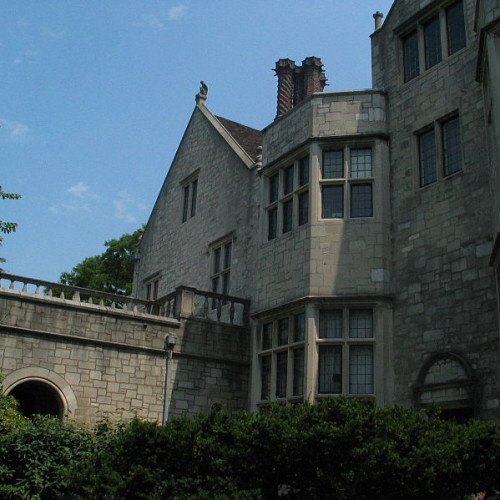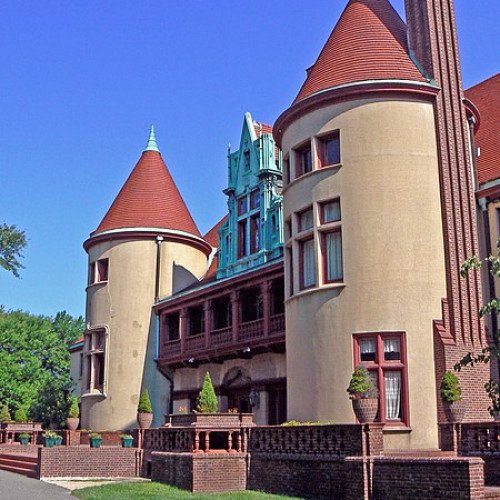Castles of "United States" COE HALL vs COINDRE HALL

COE HALL
Planting Fields Arboretum State Historic Park, which includes the Coe Hall Historic House Museum, is an arboretum and state park covering over 400 acres (160 ha) located in the village of Upper Brookville in the town of Oyster Bay, New York. Near the end of America's Gilded Age, the estate named Planting Fields was the home of William Robertson Coe, an insurance and railroad executive, and his wife Mary "Mai" Huttleston (née Rogers) Coe, the youngest daughter of millionaire industrialist Henry H. Rogers, who had been a principal of Standard Oil. It includes the 67-room Coe Hall, greenhouses, gardens, woodland paths, and outstanding plant collections. Its grounds were designed by Guy Lowell, A. R. Sargent, the Olmsted Brothers, and others. Planting Fields also features an herbarium of over 10,000 pressed specimens. The name "Planting Fields" comes from the Matinecock Indians who cultivated the rich soil in the clearings high above Long Island Sound. The history of the present-day property on the famous "Gold Coast" of Long Island began between 1904 and 1912, when Helen MacGregor Byrne – wife of New York City lawyer James Byrne – purchased six farming properties which she collectively referred to as "Upper Planting Fields Farm". The Byrnes hired landscape architect James Leal Greenleaf between 1904 and 1910 to create hedges, perennial borders, and espaliered fruit trees. Though notable features from this period are the Rose Arbor, the Circular Pool and the Green Garden Court, Coe recalled in later life, "Mrs Byrne had done very little in the shape of landscaping. She had a small lawn around the ridge of the residence" and next to it a cornfield. Most of the property, Coe recalled, was "just a jungle of scrub, locusts, and other trees".
Statistics for this Xoptio

COINDRE HALL
Coindre Hall, originally called West Neck Farm, is a 40-room, 80,000-square-foot (7,400 m2) mansion in the style of a medieval French château constructed in 1912 for pharmaceutical magnate George McKesson Brown. The home was designed by Clarence Luce, a Paris architect. It overlooks 34 acres (14 ha) of rolling land including a boathouse on the north shore of Long Island adjacent to Long Island Sound. The home was designed for George McKesson Brown of the McKesson pharmaceutical family. George, a Huntington Fire Commissioner for 29 years before his retirement from in 1960, was the elder half-brother of race car driver David Bruce-Brown. Brown donated a private road to the Town of Huntington in 1930. It was renamed Browns Road in his honor. Brown could not keep up with the maintenance of the mansion and sold it in 1939. Brown died on October 3, 1964 in Huntington at 86 years old. At the request of Bishop Monsignor Thomas Molly, the Brothers of the Sacred Heart bought this property to establish a boarding school and summer retreat. It was founded by Brother Martinian, S.C., Provincial Superior, and was named in memory of Father André Coindre, the founder of the Brothers of the Sacred Heart. The school was intended to generate funds for the formation and education of young Brothers. It operated under the supervision of the Brothers who have been active in Christian Education in the United States since 1847. The boarding school operated by the Brothers of the Sacred Heart closed on June 30, 1971 due to lack of teachers. At the time of its closing there were 116 students who boarded there five days a week.